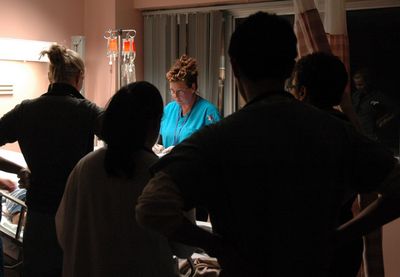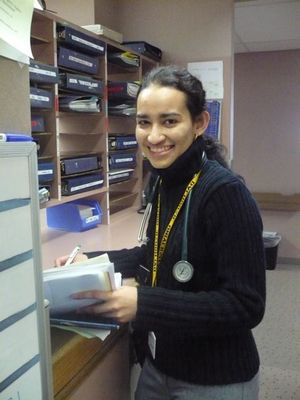



Teams

Team development takes time and effort but the pay back in patient safety and efficiency is worth it.
Health care teams can be formally established with a regular membership and clearly defined goals and ways of working together, such as an interprofessional team working on a ward or hospital unit, or they can be more fluid and come together briefly such as the team gathered for an arrest or critical event on the night shift.
"Positive working relationships within health care teams have a significant effect on the safety and efficacy of the care given to patients". [3]
The goal of any health care team is to advance the care of the patients and to that end all teams need to:
have an understanding of the various roles and responsibilities of the members
have a shared understanding of how they will work together
Teams that are established have the opportunity to deepen their knowledge of each other individually and professionally and to fine tune how they will work together. Teams can develop their own culture and ways of working together, even in a big institution or during difficult times. Small groups can be an oasis for people if the members are committed to making it happen.
Well functioning teams rarely just happen on their own, it takes time, effort and intention. It may seem counterproductive to take time out to focus on the process of team-building when everyone is stressed and overworked - but in the end being part of a well functioning team is a way of working smarter.
Educate one another about your roles, areas of expertise and special skills and interests
Know the scopes of practice of all members of the team and ensure that everyone is making full use of all of their skills
Look at ways that work is being duplicated, this can provide a safety check, but try to avoid unnecessary redundancy
Each person on a team will bring a different perspective and provide information that can help other members of the team to have a bigger picture.
Acknowledge and correct inaccurate assumptions and biases that team members may have about each other
Get to know one another personally - this can be great support and make work more enjoyable
Establish your own team culture and ways of working, orient new members to this
High performing teams share a common vision, possess a strong sense of trust and confidence, optimize collaboration, communication and coordination and understand one another’s professional roles and responsibilities. [4]
If you would like to learn more about collaborative practice you can consult the SEIPCLE Collaborative Practice Module.
Team meetings
When working in a team it is necessary to have meetings. Whether these are formal or informal it is important to have an agreed upon structure. Some examples of this include:
Agenda |
- can be circulated in advance or agreed upon at the beginning of the meeting - to outline what work needs to be done and the approximate time being devoted to each item |
Chair person | - one person to direct the conversation - ensure that everyone gets to speak - summarize and clarify discussion - direct the group to decisions or completion of tasks as required - helps group to define actionable items and divide work tasks equitably - can be a shared or rotated responsibility
|
Clear start and end | - start on time in an agreed upon location - includes a reminder of tasks for team members, information about minutes - set date, time and location of next meeting - take time for feedback about how the meeting went and whether changes need to be made to help the team function more effectively. This feedback at the end of the meeting is easy to skip, but is very important to keep a group on track and ensure that the team is meeting the needs of all participants. |
Communication structure | - a way of letting people know about future meetings, and about the results of a meeting (in the case of absences) and also as a record and reminder |
Written Communication
Don’t neglect written forms of communication.

Write things down for people (medication lists, what to do if there are problems after discharge from hospital, return appointments and follow-up, directions to the lab....)
Write legibly or print things off the computer
Follow the guidelines for safe medication ordering
Read the notes of all team members
When writing a consult request, ask respectfully for specific assistance or the answer to a clear question, provide the information and results you have available
When replying to a consult reply respectfully
Always aim to advance the care of the patient
_________________________________
3. Marshall P, Robson R. Preventing and Managing Conflict: Vital Pieces in the Patient Safety Puzzle. Healthcare Quarterly. 2005;8:39-44.
4. Canadian Patient Safety Institute. Effective Teamwork and Communication to Enhance Patient Safety.Available from: www.patientsafetyinstitute.ca/English/toolsResources/teamworkCommunication/Pages/default.aspx
 Previous
Previous